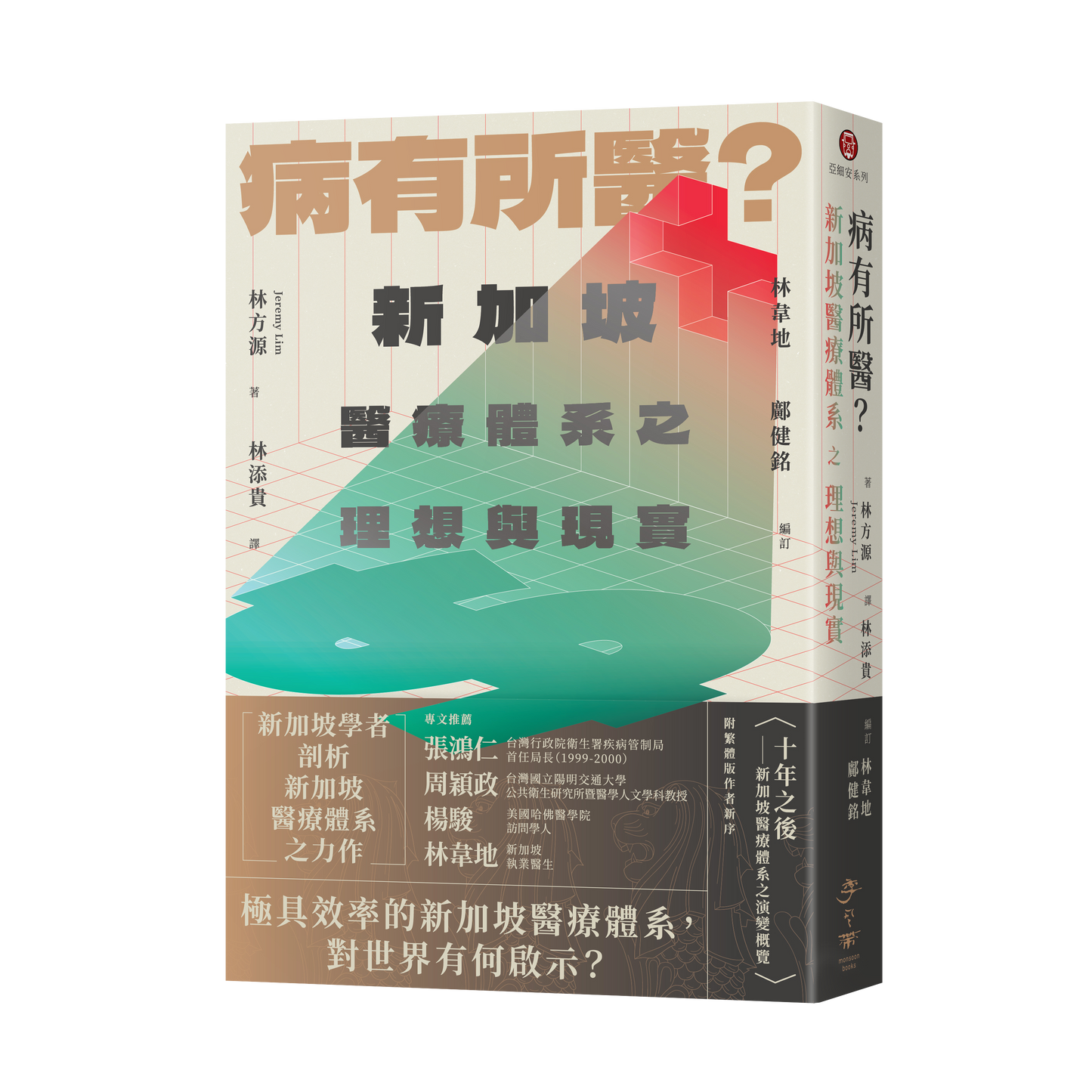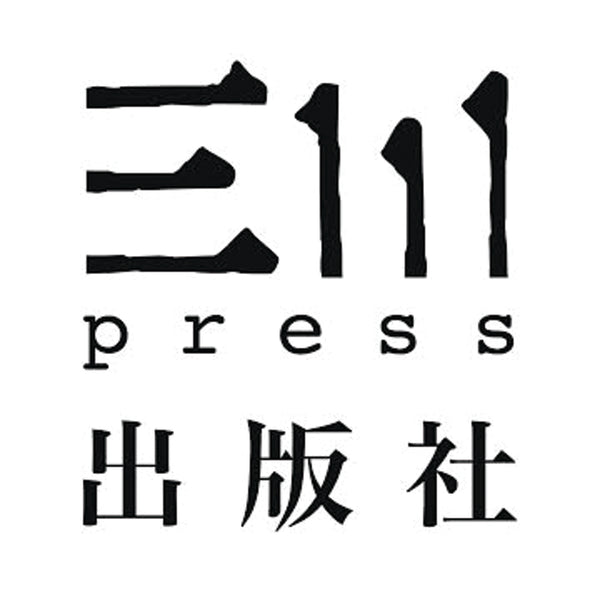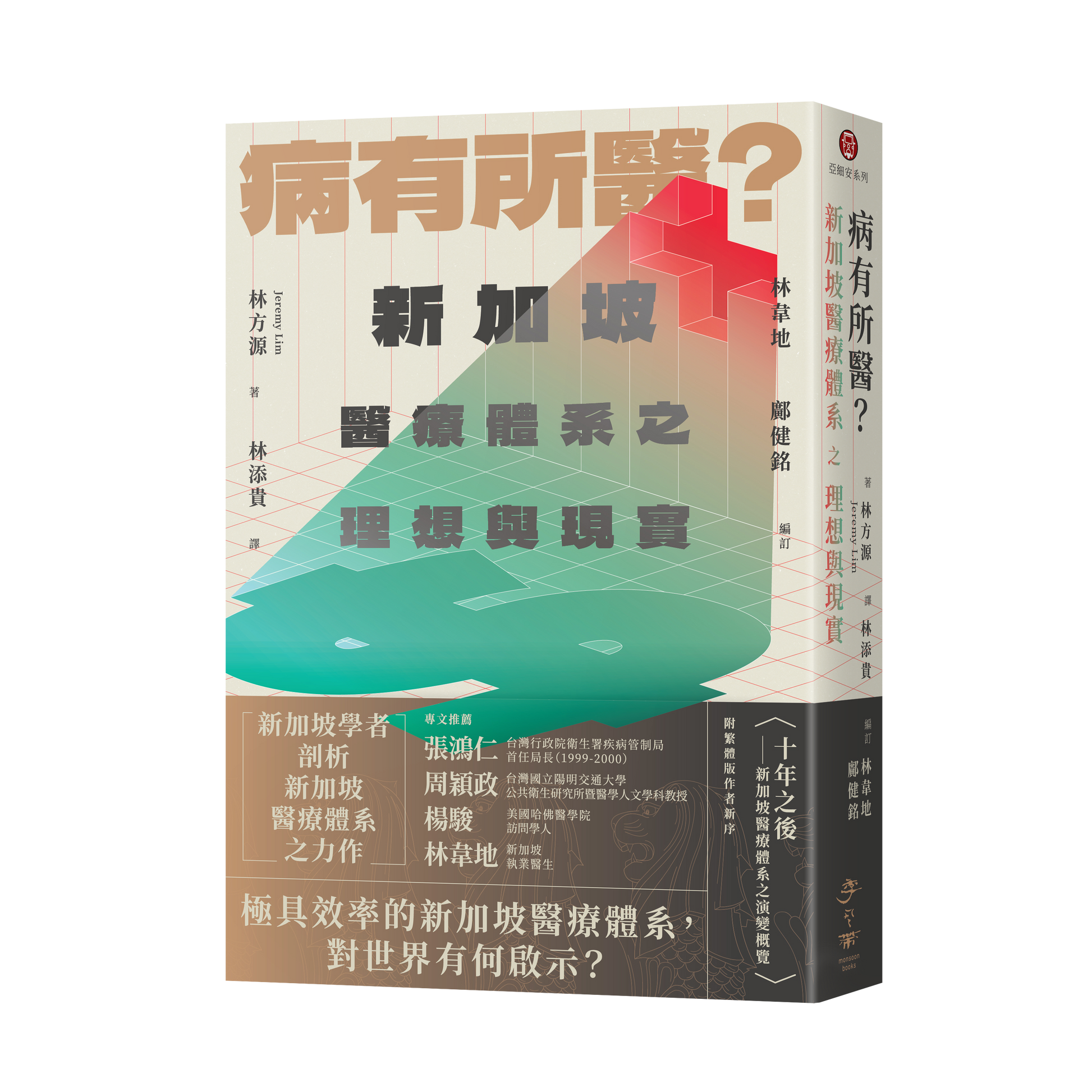Access to medical care? The ideal and reality of Singapore's healthcare system
Access to medical care? The ideal and reality of Singapore's healthcare system
5 in stock
Couldn't load pickup availability
ISBN/EAN: 9786269672233
出版日期: 2023-06-14
页数: 512页
语言: Traditional Chinese
★ A masterpiece by Singaporean scholars analyzing Singapore's medical system
Recommended by Chang Hung-jen (first Director of the Centers for Disease Control, Department of Health, Executive Yuan, Taiwan [1999-2000]), Chou Ying-cheng (Professor of the Institute of Public Health and Department of Medical Humanities, National Yang-Ming Chiao Tung University, Taiwan), Yang Jun (Visiting Scholar at Harvard Medical School, USA), and Lin Wei-di (Practicing Physician in Singapore)
★ Appendix: New Preface by the Traditional Chinese Author, "Ten Years Later: An Overview of the Evolution of Singapore's Healthcare System"
★ What lessons can the world learn from Singapore’s highly efficient healthcare system ?
What constitutes an ideal healthcare system? This is a question of great interest to politicians, scholars, and even the general public. Singapore's healthcare system has excellent international rankings, ranking sixth in the World Health Organization's "Ranking of Health Systems" (2000), the most efficient healthcare system in the world by Bloomberg's "Health-Efficiency Index" (2020), and the healthiest country in Asia by the "Global Health Index" (2017). Naturally, it has become a focus of research.
In "Accessible Care? The Ideal and Reality of Singapore's Healthcare System," Singaporean scholar Jeremy Lim analyzes every aspect of Singapore's healthcare system from a local perspective, elaborating on its financing model, regulatory framework, service types, talent management, doctor-patient relationships, and even the details and challenges of medical tourism. This is an excellent introduction to understanding the operation and effectiveness of Singapore's healthcare system.
How the burden of healthcare costs should be shared has always been a contentious political issue. For this reason, Lim Fang-yuan argues that a thorough assessment of the effectiveness of Singapore's healthcare system is difficult without a political philosophical perspective. This system assumes that public resources are limited, and therefore healthcare expenses are a significant individual responsibility. This concept underpins Singapore's healthcare financing model, giving rise to the debate over "justice" and "efficiency."
Some scholars point out that the construction of a healthcare system is shaped by a region's political and historical context, further complicating the question of what constitutes the most ideal healthcare system. Rich and poor may not share common interests, but they all cannot deny that access to healthcare is crucial to their lives.
Jeremy Lim
Currently a professor at the Saw Swee Hock School of Public Health, National University of Singapore, he has held various positions in Singapore's public health sector, including CEO of a private hospital, senior advisor to the Ministry of Health, and director of research at Singapore's largest medical group.
Foreword (I) The Political Economy of Singapore’s Healthcare System 14
◉ Chang Hung-jen (First Director of the Centers for Disease Control, Department of Health, Executive Yuan, Taiwan [1999-2000])
Foreword (II) Singapore’s Healthcare System as a Lesson 21
◉ Zhou Yingzheng (Professor of the Institute of Public Health and Department of Medical Humanities, National Yang-Ming Chiao Tung University, Taiwan)
Preface (III) What is an ideal medical system? 25
◉ Yang Jun (Visiting Scholar at Harvard Medical School)
Recommendation (IV) Singapore’s Healthcare System and Governance Model 32
◉ Lin Weidi (Practicing doctor in Singapore)
Introduction: Deconstructing Singapore’s Healthcare System from a Political and Historical Perspective
◉ Kuang Jianming (Editor-in-Chief of Taiwan Monsoon Culture)
New Preface to the Traditional Chinese Edition: Ten Years Later: An Overview of the Evolution of Singapore’s Healthcare System 47
◉ Jeremy Lim
Concept map of Singapore's medical system 82
Part 1 The Political Economy Behind the Healthcare System Chapter 1 Overview of Healthcare in Singapore 85
1.1. Basic Characteristics of Singapore’s Healthcare System 87
1.2. Singapore’s Healthcare System from a Public Perspective89
Chapter 2 What is the optimal health care system? 91
2.1. What is the medical system? 92
2.2. Who is protecting health? 94
2.3. Is there any cure for illness? 95
2.4. About the “Iron Triangle of Medical Care” Framework96
Chapter 3 The Political Philosophy of Singapore’s Healthcare System 99
3.1. What is political philosophy? 101
3.2. Political Philosophy in Singapore 102
3.3. Lee Kuan Yew, the Welfare State, and the “Singapore Story” 105
3.4. The Political Economy of Singapore’s Public Policy 112
3.5. Division of labor between market and government 118
Part 2: Access to Medical Care? Financing Model of Singapore’s Healthcare System Chapter 4: Overview of Singapore’s Healthcare Financing Model 123
4.1. A brief history of the development of Singapore’s healthcare financing model 125
4.2. Major Expenditure of Singapore’s Healthcare System128
Chapter 5 Medical Cost Pressure on Patients in Singapore 131
5.1. The Value of Government Subsidies from the Government’s Perspective132
5.2. Medical cost pressure faced by patients in Singapore135
5.3. Survey on Patients’ Ability to Pay 139
5.4. Rethinking Government Subsidies 143
Chapter 6 “User Pays”: On the Philosophy of Singapore’s Medical Model 147
6.1. A Brief History of Singapore’s Medisave Development 148
6.2. Officials’ Criticism of “Free Medical Care”154
6.3. Lee Kuan Yew and the Concept of Medisave 156
6.4. The Evolution of Singapore’s Medisave Model 157
6.5. Health savings from an economic perspective 161
6.6. The reality of health savings and the ideal of medical care 163
Chapter 7: Singapore’s Healthcare System: Medical Insurance 167
7.1. About MediShield 168
7.2. Deconstructing National Health Insurance 170
7.3. The Success and Failure of National Health Insurance 174
Chapter 8: Safety Net of Singapore’s Healthcare System 185
8.1. About Medifund 186
8.2. The Political Philosophy Behind Health Funds 190
8.3. Implementation of the Health Fund 192
8.4. The Successes and Failures of Health Funds 195
Part III History of the Development of Singapore’s Healthcare System Chapter 9 Services in Singapore’s Healthcare System 199
9.1 Achievements of Singapore’s Medical Services 199
9.2 Emerging Problems in Singapore’s Medical Services 200
Chapter 10 A Brief History of Singapore's Medical Services 203
10.1. Medical Services during the British Colonial Era 204
10.2. Medical Services during the Autonomy Era and After the Independence of the Nation 205
10.3. National Specialty Centre 209
10.4. The dramatic transformation of Singapore hospitals
10.5. Corporatization of the Medical Service System 212
Chapter 11: The Management Structure of Singapore’s Healthcare System 225
11.1. Characteristics of the Management Model 226
11.2. Challenges of Management Model 231
11.3. Regional Health System 231
11.4. Challenges of Regional Medical Systems 237
11.5. Pros and Cons of the “Many Helping Hands” Concept 241
11.6. Performance of Singapore’s Healthcare Services Management 243
Chapter 12: Decision-making Ecology of Singapore’s Healthcare System 245
12.1. Case Study 246
Chapter 13: Drug Cost Management in Singapore's Healthcare System 249
13.1. The Finance of Drug Administration in Singapore 251
13.2. About the Standard Drug List (SDL) 253
13.3. About the Drug Assistance Fund 256
13.4. Medisave and Drug Expenses 259
13.5. Singapore’s Medical Subsidy 260
Chapter 14 Medical Tourism and Singapore's Healthcare System 265
14.1. A brief history of medical tourism development in Singapore 266
14.2. Impact of medical tourism on Singapore’s healthcare system 271
14.3. The Future of Medical Tourism in Singapore 279
Part IV Talent Management in Singapore’s Healthcare System Chapter 15 Salaries of Healthcare Workers in Singapore 287
15.1. Doctors’ Salary in Singapore
15.2. Treatment and Remuneration 290
15.3. Fixed Remuneration Model 293
15.4. Evolution of Public Sector Doctors’ Salaries 296
15.5. Profession and Money 304
Chapter 16: Training Mechanisms in Singapore’s Healthcare System 309
16.1. Dainton Report 310
16.2. The Birth of the Second Medical School312
16.3. About the Third Medical School 314
16.4. Supply of Doctors in Singapore 316
16.5. Singapore’s Three Medical Schools from a Public Policy Perspective 321
Chapter 17 Regulation of Singapore’s Healthcare System 329
17.1. Regulatory choices329
17.2. Singapore’s regulatory model332
17.3. About Power 336
17.4. Regulation of Liposuction in Singapore339
17.5. Singapore Government’s Governance Philosophy 343
Chapter 18: Supply of Medical Personnel in Singapore's Healthcare System 347
18.1. Difficulties of Planning 349
18.2. Five major causes of medical staff shortage in Singapore 351
18.3. Solutions to Staff Shortages 357
18.4. Retaining Medical Talent in the Public Sector 362
Chapter 19 Singapore as the Healthiest Country in the World 371
19.1. What is the healthiest country?
19.2. The Myth of Prevention is Better Than Cure 375
19.3. “Healthy Living” in Singapore 377
19.4. The shortcomings of “healthy living” in Singapore 386
Part V: Looking Back at Singapore’s Healthcare System from a Global Perspective Chapter 20: The Future of Singapore’s Healthcare System 395
20.1. Singapore’s healthcare system has a global rating of 397
20.2. Reform Imagination 398
20.3. Population Pressure 404
20.4. Sharing of Medical Expenses 405
Chapter 21 Singapore's Path to Healthcare System Reform 409
21.1. Peace of mind medical services 411
21.2. Reasonable Medical Expenses 416
21.3. Medical Service Model 419
21.4. Medical Records 423
Chapter 22: Singapore’s Healthcare System and Its Implications for the World 431
22.1. Health and Medical Services 432
22.2. Singapore’s unique healthcare financing model 435
22.3. Market and State Intervention 438
22.4. Cross-border experience exchange 441
Chapter 23 Conclusion 443
Chapter Note 447
Share


